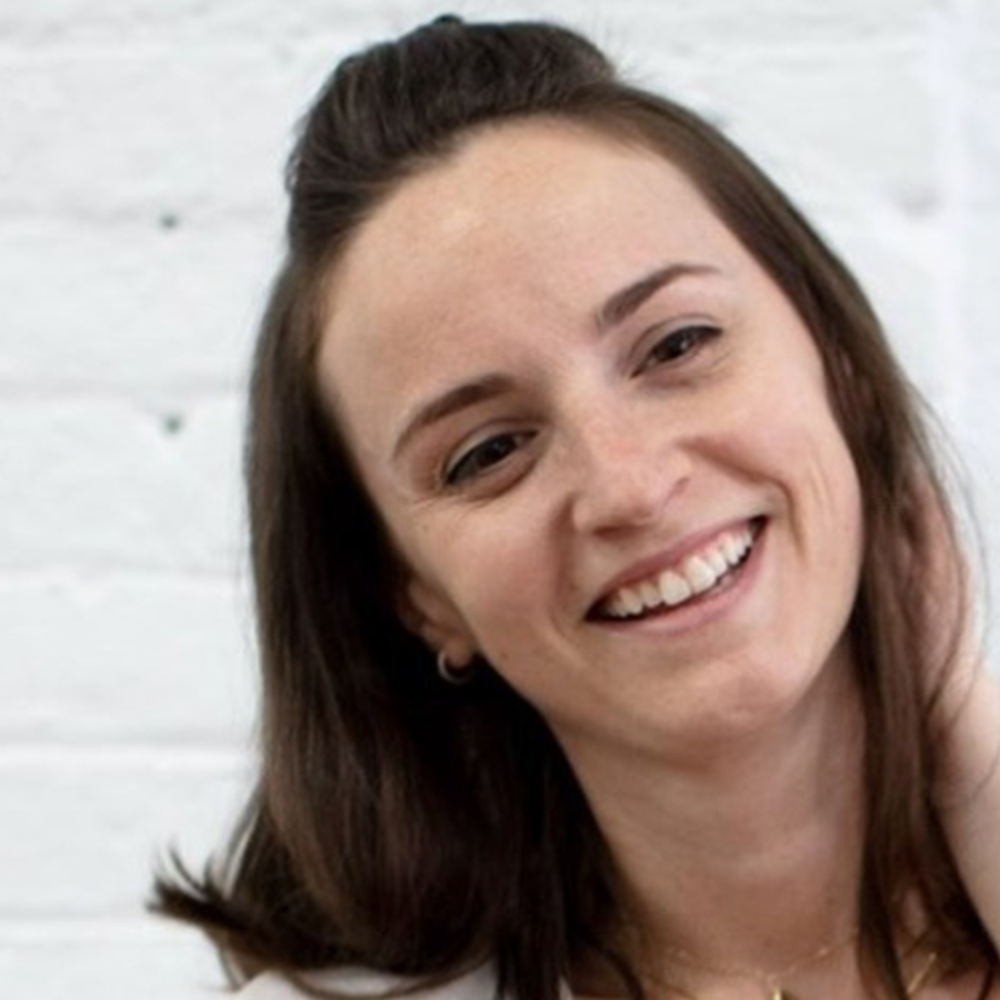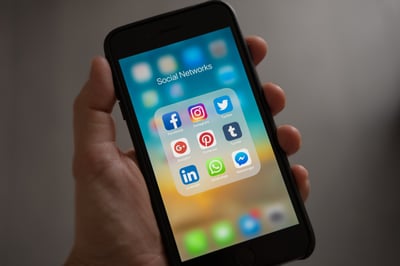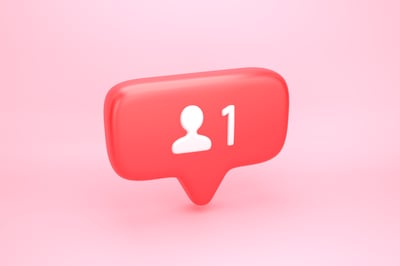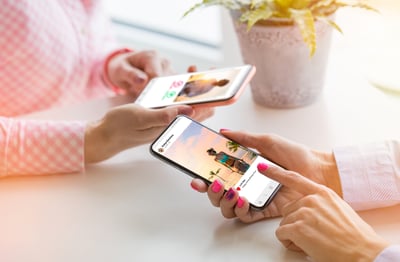Believe it or not, there’s more to Pinterest than browsing aspirational Keto recipes, Halloween crafts, and mermaid ombre hairstyles.
At least, that’s what the 100 million-plus businesses that are currently using the social media platform have learned.
In this article, expect to learn the key demographics that use Pinterest and, of those, which are most likely to interact with your business Pinterest page at different points in the sales funnel.
You’ll get a good understanding of the most commonly used Pinterest for business terms and view examples of pages that have done it well. Finally, you’ll begin to explore the social media marketing benefits of creating a business Pinterest page and maintaining it.
Interested in learning more about social media marketing software? It can help manage multiple social media channels across platforms for ease of use on large and small teams.
If you're looking for a specific part of this guide, feel free to jump ahead to any of these sections:
As you likely know, Pinterest is a free social media platform that allows users to display, share, and collect visual elements (mainly photos, as well as some videos), saving them to virtual “boards.
A Pinterest board essentially digitizes that vision board that used to hang above your childhood bed. Except instead of shoddily cut-out scraps of Seventeen Magazine, you can pin everything from recipes, fitness tips, and fashion to inspirational quotes, interior design, and travel photos.
Upon logging in, a user sees a feed that is comprised of content that users they follow are pinning, or saving, on their respective boards. The feed might also contain sponsored posts from companies that have deemed the user to be a good demographic fit for the content being promoted.
In order to determine if using Pinterest for your business is a good fit, it’s helpful to have an understanding of who exactly is logging into the social media platform and what makes them tick.
Though Pinterest’s user base isn’t nearly as large as that of Facebook, Instagram, or YouTube, it’s important to keep in mind that the users are deeply engaged.
Pinterest for business allows brands to collect and organize photos, articles, and other forms of online content according to specific areas of interest.
Here’s Pinterest’s main audience and a bit about each demographic:
Since its inception in 2010, Pinterest has proven itself to be a platform that heavily appeals to women. In fact, Pew Research estimates that nearly half of all women online are Pinterest users, compared to just 17 percent of men.
However, like most areas of society that women predominantly inhabit, men continue to encroach. More than 50 percent of new Pinterest sign-ups identify as men.
We might be killing diamonds, breakfast cereal, and home ownership, but one thing’s for sure: we’re keeping Pinterest alive. Half of adults aged 18 to 34 use Pinterest at least once a month. This is a huge advantage for businesses that want to sell to people in this age range.
40 percent of Pinterest users have a household income of more than $100,000 annually, while 50 percent of users make $50,000 or more individually. This is huge -- and a lot of buying power. It’s clear that Pinterest users are ready and willing to spend money on the products and services they see presented by businesses on Pinterest.
Nearly 85 percent of Pinterest searches happen on mobile devices, which makes sense if you consider that users likely consult their Pinterest apps while looking for what to make for dinner or how to style their living rooms. Consider the platform your content will be viewed on if you’re a business that wants to begin a Pinterest profile.
If you’re attempting to reach any of these groups, it might be time to consider adding a business Pinterest page to your social media mix.
Your Pinterest board should ultimately reflect you and the mission of your business. However, there are some words of wisdom that should be given consideration for optimal results on your new marketing venture.
This is essential for all content creators, regardless of the platforms they call home. Pinning something once a day -- ideally during peak hours like the evenings and weekends -- is a good way to ensure your content reaches far and wide.
Let this nugget of wisdom inform your Pinterest strategy; if you have a large number of posts in your content pipeline, consider spacing them out over the course of several days to keep your brand in the spotlight for as long as possible.
Pinterest is one of the most visually-centric social media platforms on the web. Creating high-quality, arresting images that jump off the page. Taking the extra time to ensure the quality of the images you post is second to none is important to ensure your brand is well-represented.
"Rich Pins" are an excellent way to add extra details to your Pins from your website. Currently, there are for types of these inserts you can use to add value to page:
1. Product pins: These add-ons make online shopping extremely easy for your customers when they want to buy one of your products that is so well represented by your enthralling graphics. Product pins include information such as availability, real-time pricing, and links to online vendors.
2. Recipe pins: These are essential for your marketing strategy if your business is in any way involved in the food industry. Recipe pins will allow you to share ingredients, instructions, and visuals all in one post.
3. Article pins: Article pins are excellent tools for sharing your long-form content in a visually-appealing way on a new platform outside of your blog. These pins highlights the author, title, featured image, and gives a brief description of the piece under the Pin image.
4. App pins: These pins are wonderful if you have an application or bit of software that you want to make easily accessible to your audience. Simply by tapping the included "install" button and your users can have the application in seconds!
This last one is a bit harder, yet still crucial for getting the most out of your Pinterest content. Make sure you're including relevant keywords and hashtags so that your Pinterest account can become an SEO goldmine for your business!
These bits of advice should serve as a solid foundation upon which you can craft a more fleshed-out Pinterest strategy. Read on for more in-depth advice and examples of how to make good use of the platform!
Before we dive into the benefits of building and maintaining a business Pinterest page, it’s beneficial to make sure that all Pinterest-specific jargon is understood. Here are some of the most common Pinterest terms.
A Pinterest board is where users save pins that are related to one another. For example, a user might have a board exclusively for recipes or Christmas decor ideas. In the context of business, many businesses on Pinterest will curate boards on their profile pages that align with their products or services. For example, let’s take a look at the boards posted on Mr. Coffee’s Pinterest page.
Because the obvious theme of the brand is coffee, the brand chose to create several boards that both fit the theme and keep users in mind. While Mr. Coffee doesn’t produce kitschy inspirational home decor revolving around coffee, plenty of other vendors do, and it’s not a far stretch to imagine that some of the same people who’d be interested in pictures and recipes about coffee might also be interested in seeing some coffee-themed decor.
In the context of Pinterest and Pinterest business pages, a comment is simply a remark left on a pin with the user’s thoughts and feelings. Perhaps a Pinterest user has tried a recipe and wants to let fellow Pinterest users know that they really enjoyed it. Users can even tag another Pinterest user they follow in the body of the comments by adding their username preceded by an ‘@.’
Here’s a great example of some comments left on a pin that was pinned by an interior decorator’s Pinterest business page.
The pin itself appears at the top, and a box for comments is at the bottom. Comments from other users appear in the middle of the page, but the graphic is the primary element of the page.
Followers are other Pinterest users who have chosen to follow the pins on your Pinterest business page or an individual user’s page. Whenever your brand adds a new pin, it will appear on your followers’ home pages without them having to take the extra step to search out your content.
As you can see, Forever 21’s business Pinterest page showcases how many followers it has in the upper right-hand corner of its profile page on the red box. Your Pinterest for business page will also showcase this number publicly -- even more incentive to grow your Pinterest followers count!
What’s pinned on a board? A pin, of course. Pins are the currency of Pinterest -- the source of all content. Here's an example of pins you might see on a business Pinterest page.
In this example, you can see that the image is very visually appealing and heavily branded with the logo placed front and center, and an obvious correlation between the flavor of the beverage (pineapple and strawberry) to the props in the photo -- a pineapple cup with brightly colored strawberries. This was pinned by LaCroix and lives on its Pinterest business page.
There are several different types of pins, including Rich Pins and Buyable Pins. Pinterest Rich Pins are a tool that businesses and bloggers can use to take content from their websites and translate it directly to a pin, which is reflected in its Pinterest image description. Rich Pins come in four varieties: article pins, product pins, app pins and recipe pins.
A pinner is any individual or business Pinterest user who engages in the activity of pinning. You pin, I pin, we’re all pinners.
Think of saving, or re-pinning, a pin as a retweet. When you save a pin, you find the post one of your own boards. This is sometimes referred to as repinning. In order to do this, you’ll want to hit the red save button on a pin itself. See below:
Once you hit save, you’ll be prompted to save the pin to a particular board. If you don’t have any boards created, you’ll be prompted to create a board and name it, as such:
For brands, organizations, or businesses on Pinterest, the source link is one of the most important things to pay attention to. The source link is the URL of the website where the pin originated -- so it’s critical to make sure that the source link goes to the right place.
For example, let’s say you’re browsing Pinterest to check out some travel inspiration -- you and your partner want to go on a camping trip. You come across the following pin from L.L. Bean -- aww, cute puppy! He’s so adventurous, all snuggled up in a kayak! Your heart is warmed.
You click the link, and where does it take you? L.L. Bean’s kayak page, of course!
This is a perfect illustration of why having the proper source code can make the difference between throwing a nice photo out into the ether and using it as a smart tool to drive clicks that you can later run through Google Analytics to tweak your Pinterest business strategy.
If browsing some of the most colorful, engaging pages of brands that are universally beloved hasn’t convinced you that creating a business Pinterest page is a worthwhile endeavor, read on for more benefits of a business Pinterest page.
If you’ve done market research on where or for whom your products primarily perform well, chances are, you’ve tailored your marketing and social media strategy to reach that particular demographic. However, on a platform such as Pinterest, you know exactly who your audience is -- as stated above, it’s generally young, wealthy women.
If you’re considering integrating a business Pinterest page into your social and marketing strategy, take some time to give your outreach a fresh look. Are you alienating a potential audience because you just don’t have the right assets to promote it on a visual channel such as Pinterest?
Perhaps re-allocating some of your marketing budget to getting photography and videography in place to share can set you up for other promotional opportunities on new channels, such as Pinterest, bringing in more business from new people.
Pinterest is an extremely casual platform where people write and pin candidly. This is a wonderful opportunity to integrate a more personalized brand voice into your business Pinterest page. Shed your polished image and get to know your customers -- they’re the ones repinning and following you!
This is also the ideal place to dip your toe into some brand marketing research -- put your feelers out and take note of what you notice trending on your competitors’ pages and which pins perform the best.
When we discussed the source links above, I emphasized the importance of making sure that wherever the clicks lead is the most specific destination. If a pinner clicks a link on a product page for LaCroix and it takes them to the LaCroix brand home page, it won’t have nearly as much of an impact as a destination link leading to a recipe page on the LaCroix website would.
Consider using your blog pages as the destination for your written content -- because there is such a strong blogger presence on Pinterest, users aren’t turned off by written content. If it’s relevant, they’ll click.
For brands that prioritize strong visual content on social media, setting up and maintaining a business Pinterest page is a great step toward a robust social media marketing plan that reaches several demographics.
Don't stop at Pinterest! Make sure to set up a Facebook business page, a LinkedIn business page, and other company profiles on social networks across the web.
Now that you're an expert on Pinterest business pages, click here to learn about Pinterest marketing strategies to boost sales and leads!
Amy Lecza (she/her) is the former director of content marketing at G2. Her background is in journalism, PR, and content creation, and she has a degree in both journalism and culinary arts.
Implementing a social media marketing strategy can seem like an impossible task for a small...
 by Stephanie Graham
by Stephanie Graham
Instagram has become a social media giant.
 by Lizzie Kardon
by Lizzie Kardon
Instagram is a powerful platform for businesses.
 by Holly Rollins
by Holly Rollins
Implementing a social media marketing strategy can seem like an impossible task for a small...
 by Stephanie Graham
by Stephanie Graham
Instagram has become a social media giant.
 by Lizzie Kardon
by Lizzie Kardon


